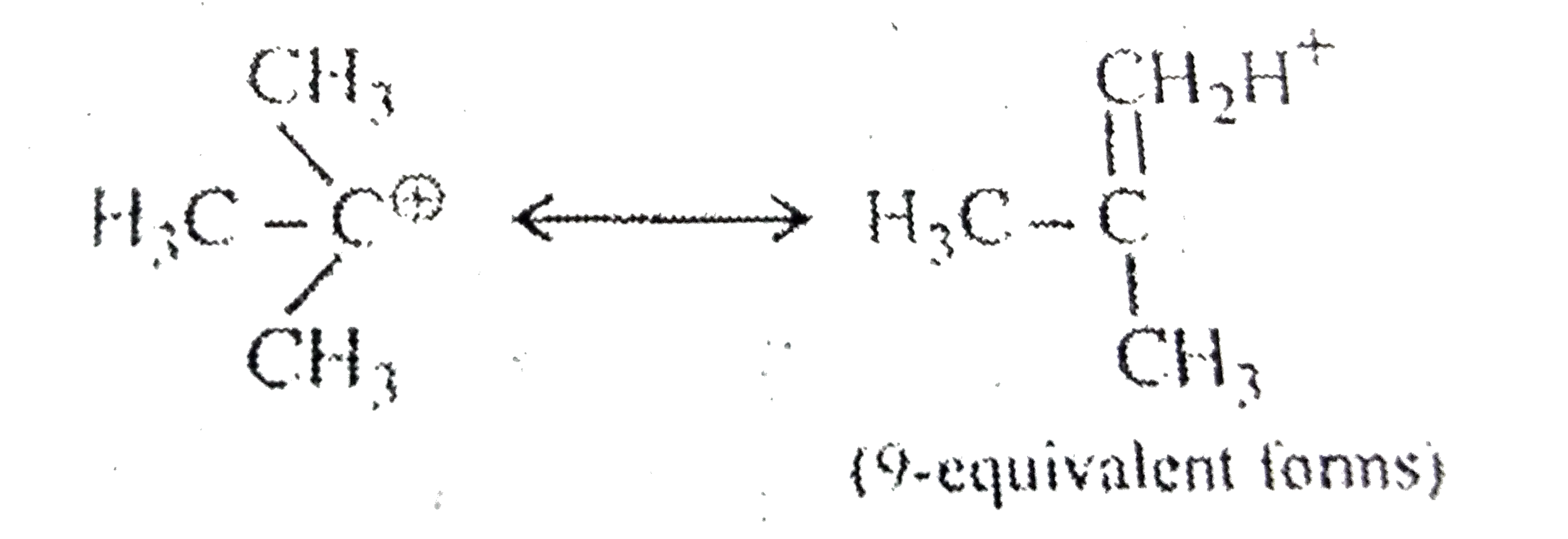(A) Tertiary carbocations are generally formed more easily than primary carbocations.
(R) Hyperconjugation as well as inductive effect due to additional alkyl groups stabilize tertiary cabocations.
if both assertion and reason are true and reason is thr correct explanation of assertion
If both assertion and reason are true but reason is not the correct explanation of assertion
If assertion is true but reason is false
If both assertion and reson are false.
The correct Answer is:A
Greater the number of H-atoms present on the carbon atoms α to unsaturation the more resonating forms are possible due to dyperconjugation and thus grater is the stabillity of carbonium ion.

Topper's Solved these Questions
Similar Questions
Knowledge Check
Assertion : Tertiary carbocations are generally formed more easily than primary carbocations.
Reason : Hyperconjugation as well as inductive effect due to additional alkyl groups stabilize tertiary carbocations.AIf both assertion and reason are correct and reason is correct explanation for assertion.BIf both assertion and reason are correct but reason is not correct explanation for assertion.CIf assertion is correct but reason is incorrect.DIf both assertion and reason are incorrect.(A) Tertiary carbocations are generally formed more easily than primary carbocations.
(R) Hyperconjugation as well as inductive effect due to additional alkyl groups stabilize tertiary cabocations.AIf both assertion and Reason are true, and reason is the true explanation of the assertion.BIf both assertion and reason are true, but reason is not the true explanation of the assertion.CIf assertion is true, but reason is falseDIf both assertion and reason are false(A) Tertiary carbocations are generally formed more easily than primary carbocations.
(R) Hyperconjugation as well as inductive effect due to additional alkyl groups stabilize tertiary cabocations.AIf both assertion and reason are true and the reason is the correct explanation of the assertionBIf both assertion and reason are true and the reason is not the correct explanation of the assertion.CIf assertion is true but reason is false.DIf the assertion and reason both are false.
A tertiary butyl carbocation is more stable than a secondary butyl carbocation because of which of the following ?
View Solution(A) Tertiary carbocations are generally formed more easily than primary carbocations.
(R) Hyperconjugation as well as inductive effect due to additional alkyl groups stabilize tertiary cabocations.
View SolutionThis section contains Assertion and Reason type questions, Each question has 4 choices (1), (2), (3) and (4), out of which only one is correct.
Assertion (A) A tertiary carbocation is more stable than a secondary carbocation which is more stable than a primary carbocation.
Reason (R) The inductive effect operate through sigma bonds and decrease rapidly with increase in distance between the substituent and the reaction site,
View SolutionIn which of the following cations rearrangement takes place?
View SolutionUnder common reaction conditions, a carboncation rearranges to another carbocation of equal or greater stability. For example secondary carbocation will rearrange to a tertiary carbocation. It will not rearrange to a less stable primary carbocation. This generalization is not absolute, and because there is not is a high energy barrier to the rearrangement of carbocations, rearrangement to a less stable cation can occur if it offers the chance to forme a more stable product.
In which of the following cations rearrangement takes place most rapidly?
View Solution